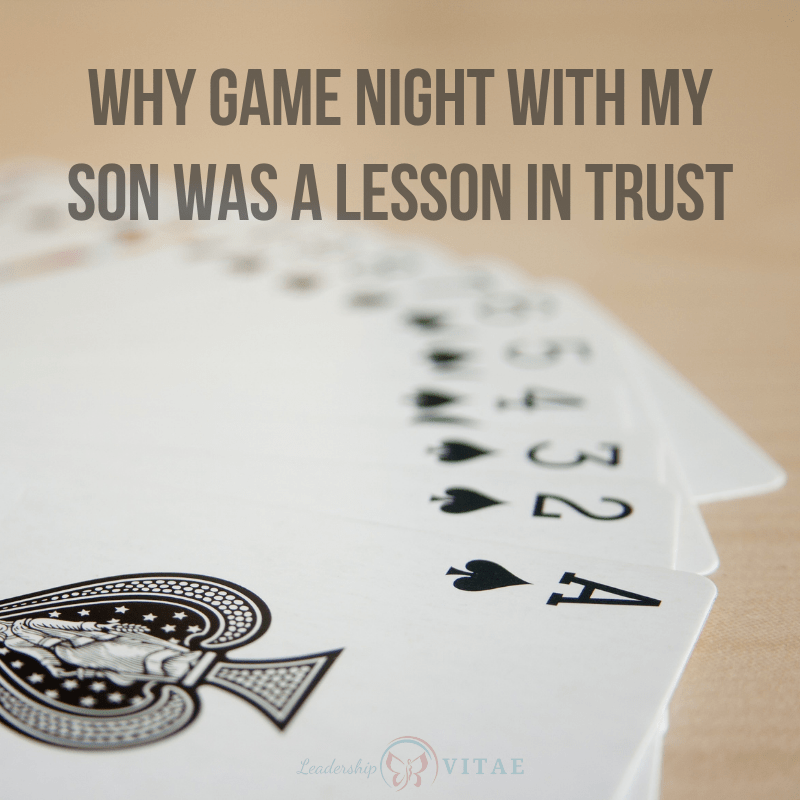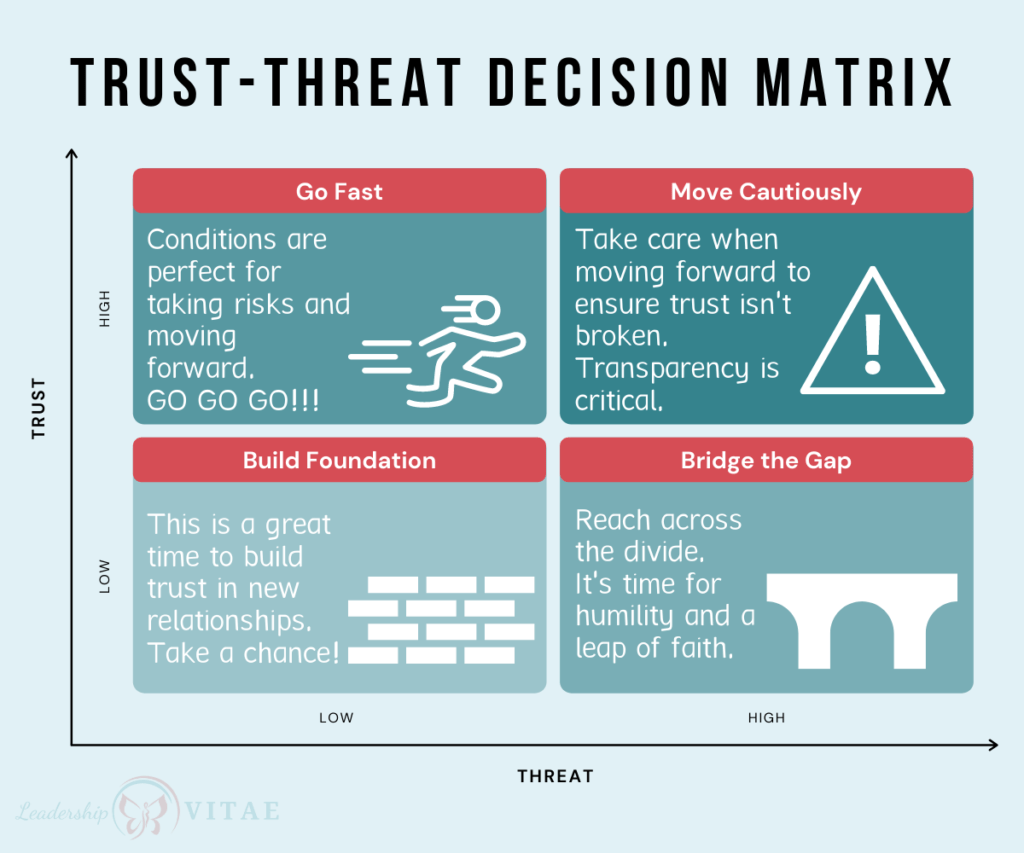
Last summer, I was talking with a client on next steps to move her personal business strategy forward. She worked for one company and was starting her own coaching gig on the side. She was working on a proposal to integrate her day job and her passion for coaching.
As she outlined her approach, she included her thoughts on communication to leaders in the company. She had a desire to share her entire 5 year plan, along with background, justification, and context.
She was highly focused on transparency and honesty. To her, anything less than full disclosure was holding back and not being authentic.
I’m big on transparency and honesty. Sometimes, however, we may not benefit from signaling every move or showing every card. We need to consider the existing trust level, and the threat – or risk – involved.
As we talked about trust and threat, and what to reveal when, it reminded me of teaching my son how to play cards.
A young Uno master
When I was little, I learned how to play advanced card games early. I was determined to do the same with my son. I figured we’d start easy, and began with Uno when he was a toddler.
In the beginning, when he was just learning the game, we both put our cards on the table. This way, I could show him what I was doing and why, as well as guide him on his decisions.
Next, I picked up my cards while his were still showing. He could look to me for guidance but could no longer see my cards until I played them.
The final step was hiding his cards with a book, since he was too small to hold them. Then neither of us could see the other’s cards and he would have to be more deliberate in how he asked for help.
He was 2 when he beat me for the first time. After that, I made sure the games got harder. We learned new games and became more competitive.
The foundation for learning and growth was based on trust. I created a safe environment for him to experiment. As he got better at a game, he kept more of his plays to himself. Trust was still there, but the stakes were higher for him to win.
The intersection of threat and trust
When we are new to our careers or roles, we tend to start out with all our cards on the table. We don’t yet perceive threats, allowing us to be fully transparent. Hopefully, we get feedback and learn. And adjust accordingly.
As we learn what works and what doesn’t, we start to block our cards. We create boundaries, but hopefully still ask questions. Maybe signal intentions or inadvertently reveal our play (thoughts).
We start to see risk, perceived and real, which influence our decisions. We become skilled enough to decide what and when to signal. What to reveal to those we interact with.
At each point of learn/protect/reveal, trust and threat are deciding factors. Can we trust the person on the other side of the table, and what are the stakes we’re playing for?
In a game, we have a new chance with every hand. The same is true at work. In each situation, we can determine the trust and threat level to decide our course of action.
When trust is high, it generally gives a green light for us to move forward. However, we should move cautiously when risk is high, so we don’t abuse that trust.
When trust is low, we have the chance to build trust when the threat is low. If it’s high, we likely have to reach out and try to bridge whatever gap exists. We have to give the benefit of the doubt or the threat and trust gap will hinder our progress.

Transparency without boundaries is its own threat
Working with my client, we talked about potential threats to her integration strategy. Compared her goals and the goals of the company. Discussed alignment of her existing job and what she was proposing.
Understanding the potential threat or risk was the first element to help shape her story and decide what to present when. If her end game was something completely different than her current role, it might be worth stepping towards and communicating her goals over time.
The next step was who to engage. Who in the organization did she trust to hear her idea and give constructive feedback? Who could help shape her proposal so that it would be well-received and moved forward?
By having conversations about trust and threat, she was able to determine what to share when. She could still be transparent and authentic, but judicious about how much she shared right out the gate.
There are risks to opening the floodgates and sharing everything we know and plan right now. Sometimes, we need to bring people along at their pace instead of our own.
Building trust means knowing the stakes
We can honor transparency and authenticity by sharing our truth and what’s relevant in each interaction. How deep and broad we go is subjective. Often, the threat, or risk, is what we use to decide.
When building trust, it pays to err on the side of transparency. Maybe not showing all of our cards, as we might with a trusted friend, but more of them than we would a stranger.
If the experience is positive, we can choose to reveal more. If it’s not, we can choose to reveal less. Remembering that everyone’s definition of transparency is different, and the level of transparency needed is situational.
At the same time, it pays to remember the relative threat, or risk. If the threat is low to being transparent, go for it. If it’s high, consider if it’s real or perceived threat. Often, what we think is a threat may really be an opportunity for growth.
At each stage of our journey, we learn and get better. What was a risk yesterday is an opportunity today. Each day is a chance to up our game.









3 Responses
Excellent article. Its been successful in my life.
I really appreciate this article. Sometimes being judicious can be perceived as insincerity but this article clarifies the difference.
Pretty great post. I simply stumbled upon your blog and wanted to mention that I’ve really enjoyed browsing your weblog posts. After all I’ll be subscribing for your feed and I’m hoping you write again soon!